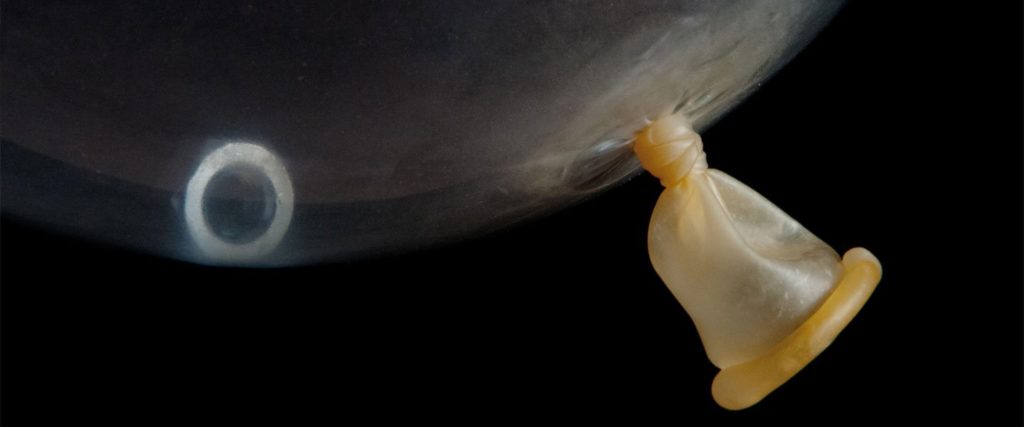Halloween Sounds - Screaming Cup
This is the perfect sound effect to carry door-to-door on your trick or treat adventure.

Here’s an easy-to-do experiment using only a balloon and a hex nut from the hardware store. Be sure to buy enough supplies for all of your friends because there’s nothing better than a room filled with screaming balloons. Oh, and it’s also a great way to learn about the science of sound.

Squeeze the hex nut through the mouth of the balloon. Make sure that the hex nut goes all the way into the balloon so that there is no danger of it being sucked out while blowing up the balloon.

Blow up the balloon, but be careful not to overinflate the balloon, as it will easily burst. Tie the end of the balloon and you’re ready to go.

Grip the balloon at the stem end as you would a bowling ball. The neck of the balloon will be in your palm and your fingers and thumb will extend down the sides of the balloon.

While holding the balloon palm down, swirl it in a circular motion. The hex nut may bounce around at first, but it will soon begin to roll around the inside of the balloon. What is that sound? Could the balloon be screaming? The sound every parent loves . . .

Once the hex nut begins to spin, use your other hand to stabilize the balloon. Your hex nut should continue to spin for 10 seconds or more.
This is actually a 2-for-1 experiment—you’re learning about the science of motion and sound. To understand how and why it works, you have to look at the forces that are acting on the hex nut. The shape of the balloon makes the hex nut move in a circular path. Otherwise, the hex nut would want to continue to move in a straight line. Another force to consider is friction. There’s very little friction between the edge of the hex nut and the balloon. More friction would cause the hex nut to slow down and stop.
The real force in action here is a centripetal, or center-seeking, force. Centripetal force is the inward force on a body that causes it to move in a circular path. The old concept of “centrifugal force,” an outward or center-fleeing force, has been largely replaced by a more modernistic understanding of centripetal force.
A hex nut has six sides, and these flat edges cause the hex nut to bounce or vibrate inside the balloon. The screaming sound is made by the sides of the hex nut vibrating against the inside wall of the balloon.
What happens when you change the size of the balloon or the size of the hex nut? Try using a marble in place of a hex nut. Does the marble make the balloon “scream?” (Hint: Librarians like the marble version of this activity.) Experiment with other objects whose edges may vibrate against the balloon.
Take a trip to the moon in order to try the experiment in an environment with less gravity. How does this affect the outcome of the experiment? Does the hex nut spin for a longer period of time? Come back to Earth and hold a press conference.